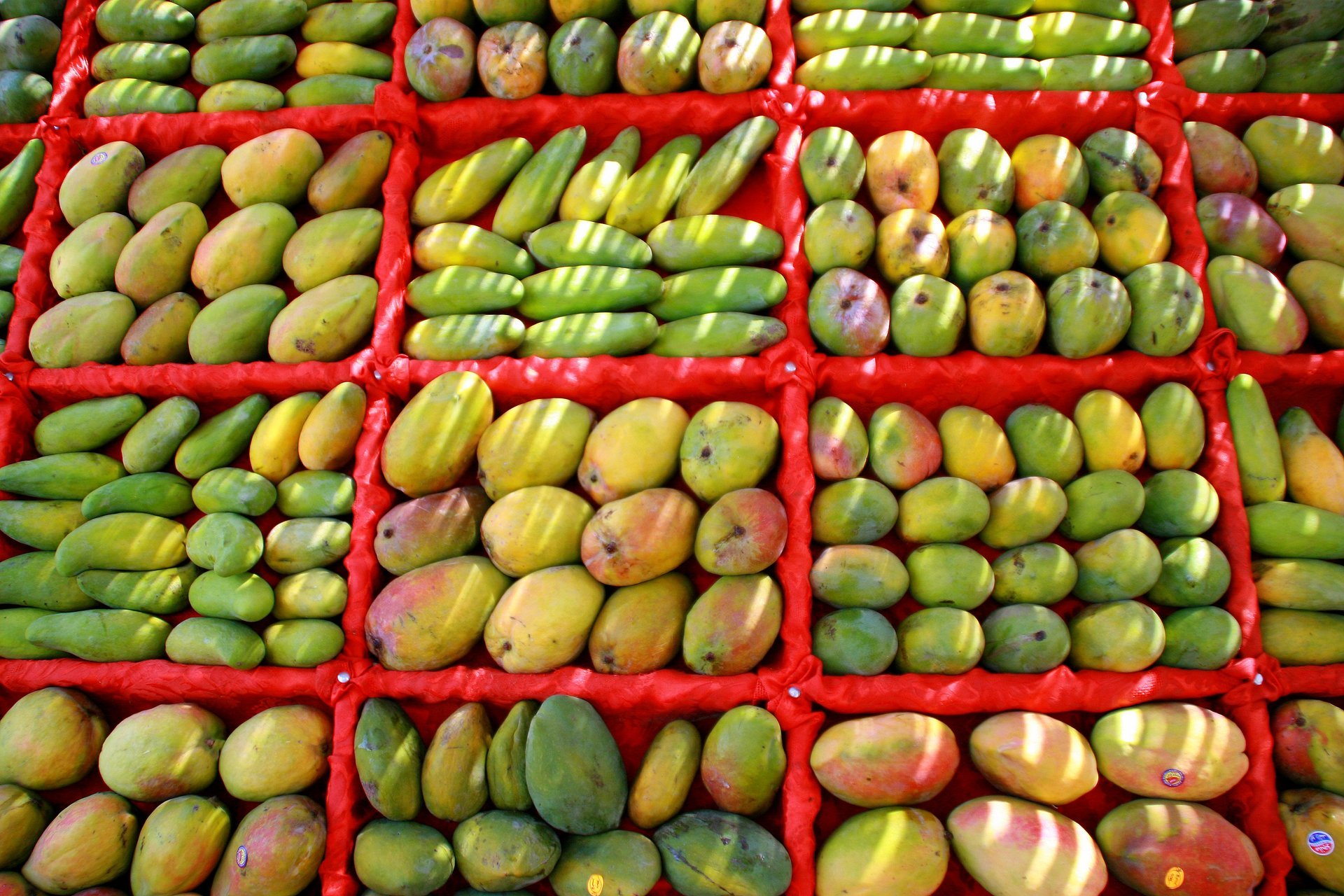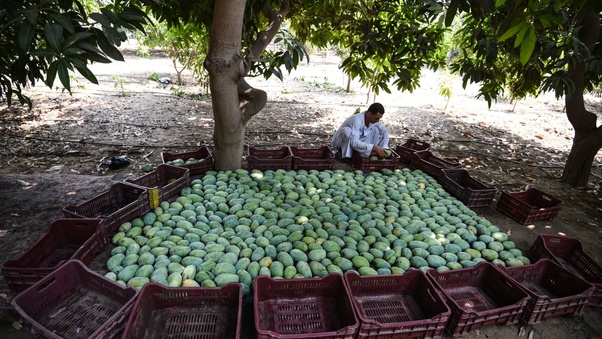Nothing beats the smell of a fresh pile of mangoes on a warm summer’s day. No matter how one chooses to eat it, in the form of a ‘cup’, in the form of ‘senan’ (teeth or hedgehog style) or simply biting into it, the juicy interior with its rich sweet flavor can make anyone feel instantly better.
Egyptian mangoes are a staple every summer, and they come in all sorts of shapes and sizes. In fact, Egyptian mangoes come in about 15 different varieties, some of the most popular being Eweis, Hendi (Indian), Sedikka, Al fons and Baladi.
The most widely popular mangoes in Egypt are usually on the larger side, green in color on the outside and vibrantly yellowish or orange on the inside. Their meaty interior are greatly sweet in flavor and oftentimes slightly acidic.
Egypt’s weather, as well as its soil, is known to be a great atmosphere for cultivating mangoes. These wonderful summer fruits however, are originally Southern Asian (primarily Indian) and were introduced to Egypt in the early 19th century.
The Origins of the Mango

Mangoes are said to have been around since ancient times, possibly cultivated in India as early as 2,000 BCE. According to an article on Fruit Link, mangoes are “native to southern Asia, especially eastern India, Burma, and the Andaman Islands… [it] has been cultivated, praised and even revered in its homeland since ancient times.”
The same article goes on to say that “it spread early on to Malaya, eastern Asia, and eastern Africa, as the Persians are said to have carried it to East Africa around about 10th Century A.D.”
Mangoes were first introduced to Egypt however in the early 19th century, sourced from Sri Lanka.
According to the same article, Mohamed Ali Pasha planted the first shrubs in 1825 “in what is today the garden of the Faculty of Agriculture, Ain Shams University.”
Mangoes in Egypt

Ismailia is known to be the main mango producing governorate in Egypt, along with the Sharkia, Giza, Fayoum, Qena and Nobaria governorates. According to Egyptian Fruit Corner, “these governorates are responsible for producing 88.8% of total Egyptian production, which is 197 thousand annually.”
It is Egypt’s humid summer climate, as well as its fertile soil (most especially that of the Nile Delta) that cater to the perfect cultivating environment for mangoes.
For years now, the mango fruit has grown in popularity and importance. So much so that it has even been finding its way through local culinary experimentation. During the past couple pf years, when the holy month of Ramadan would fall in summer months, mangoes have become more and more integrated into traditional Ramadan desserts.
From mango konafa to mango cakes and so much more, these beloved fruits have been finding new methods of use and consumption.
Most recently, Egypt’s first mango festival, entitled ‘Festivango’, took place last year at Cairo’s Family Park in El Rehab, New Cairo. According to an article on Egypt Independent, “the festival’s organizers vowed to the participants that they will experience mango in entirely unusual ways. The fruit will be involved in diverse food recipes both sweet and sour.”
In addition to this first of its kind festival, last summer also saw the distribution of ‘mangoes on a stick’ across various popular private beaches in Egypt’s popular North Coast area.
In any case, these delectable summer fruits have become a staple in Egyptian society and almost act as a mascot to Egypt’s vibrant summer months.





Comments (2)
[…] boasts an impressive selection of mango varieties, each with its own unique flavor and texture. Among the most popular are the Hindy and […]
[…] Mangoes top that list, to the extent that many call summer “mango season”. With over fifteen types of mangoes in Egypt, mangoes are a staple in every Egyptian household in […]